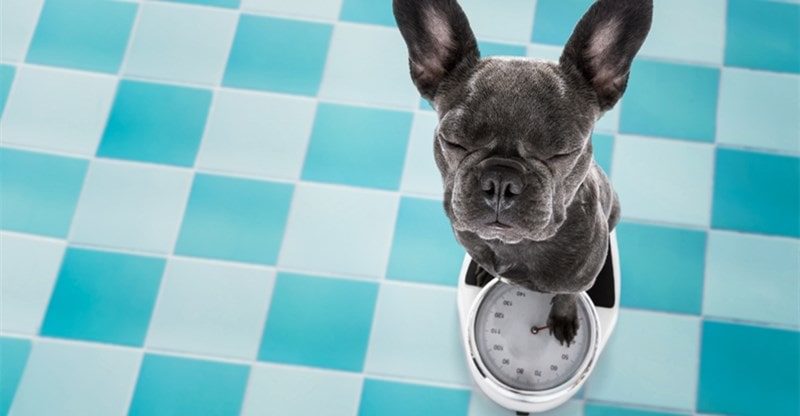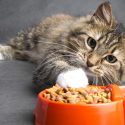How To Help Your Dog Lose Weight
Pet obesity is growing as a problem, with more and more dogs packing extra pounds. Overweight dogs have a bigger risk of illness, disease, and injury, so if you’ve been told by your vet that your dog needs to lose some weight, it’s important to take action quickly in order to help them become healthier and happier.
The good news is that helping your dog lose weight doesn’t have to be a difficult or complicated process.
Is Your Dog Overweight?
First things first; it’s important to make sure that you are certain your dog is actually overweight. The best way to do this is by taking them for a check-up at the vet; the vet will weigh your dog and compare this to the recommended healthy weight for their breed, gender, and age.
Different breeds of dogs will have different body shapes, but you can usually tell if a dog is at a healthy weight by looking at the same factors regardless of their breed. The ribs should have a minimal covering of fat; you may be able to make them out visually or feel them easily. Your dog should have an abdominal tuck and when looking at them from above, you should clearly be able to make out their waist behind their ribs.
Give Your Dog High-Quality Food
More often than not, a dog is overweight because they are eating too much food or the wrong type of food for their energy and activity levels. Just like humans, if your dog eats a lot but does not do much exercise, there’s a high chance of weight gain. If you want to help your dog lose weight, it’s important to avoid cheap commercial dog food brands that are often packed with grains like corn.
Instead, opt for a dog food that has a high protein and healthy fat content. Raw feeding is an excellent choice for a dog that needs to lose weight due to the high protein content and low carbohydrates.
Measure Your Dog’s Food
It’s important to know exactly how much your dog should be eating on a daily basis in order to best meet his weight loss goals. Don’t try and guess how much food your dog should have as it’s so easy to underestimate how much you are serving. Carefully measure out each meal that you give your dog and make sure that you are accounting for any treats that you will give them throughout the day too.
As the new diet plan starts to work and your dog loses weight, you may need to make adjustments to how much you feed her – particularly if she is exercising more as she will need more energy.
Increase Your Dog’s Exercise Levels
You don’t have to suddenly encourage your couch potato dog to start training for agility competitions, but small increases in the amount of exercise your dog is getting can make a huge difference. Even adding an extra ten minutes per walk each time you take your dog to the park will all add up and make sure that your dog is moving more.
Playing more fetch or teaching your dog some new tricks that require her to move around are all excellent ways to gradually introduce more exercise. If your dog is very overweight, it’s important to slowly make changes to his exercise routine to ensure that he does not end up overworked.
Be Careful with Treats
Treats can be very important for bonding with your dog and as a reward when training, so even if your dog needs to lose some weight, it might not always be a good idea to cut treats out altogether.
However, that being said, it’s a wise idea to steer clear of unhealthy, low-quality treats and opt for more natural dog treats. These natural dog treats from Bella & Duke are a great choice since they are very nutritious and can be given as part of a healthy and balanced diet for your dog. Bella & Duke also offers a wide range of raw food items including prepared meals that you can tailor to help your dog lose weight and improve their health.
You may also want to consider swapping food treats from time to time with something else that your dog enjoys, such as playing with their favourite toy or playing a game that they love.
Working for Treats
Another ideal way to treat your dog if you want to help them lose weight is to make them work for it. There are several doggy puzzle games that you can get, like Kongs, that you can place treats inside and give to your dog for them to get the treat out of rather than simply handing it to them.
Giving treats like this not only keeps your dog mentally stimulated as they try to work out the puzzle and get to the treat inside, but it will also encourage your dog to move around more rather than just sitting waiting for you to give them a treat.
Monitor Your Dog’s Weight
Since your dog is at home with you all the time and you see them every day, you might not notice weight loss immediately. That’s why it’s so important to stay on top of regularly monitoring your dog’s weight. Ideally, you should weigh your dog every week to keep track of how much weight she is losing.
This will also help you determine if your dog is losing weight too quickly. Ideally, dogs should lose around one percent of their body weight each week until the ideal weight is reached unless otherwise advised by your vet.
No Human Food
It can be hard to resist those puppy dog eyes staring up at the plate of leftovers from your Sunday roast, but no matter how tempted you might be to let your dog snack on your leftover chicken, it’s important to make sure that the whole family is on board with a ban on table scraps.
Even if you are feeding leftovers to your dog that is perfectly safe for her to eat, remember that it’s all extra calories that are going to make it harder for your dog to lose weight over time. If you have any other pets at home, make sure that your dog can’t sneak food from their bowls and end up eating more than they should.
Feed Little and Often
If your dog tends to eat big meals and is feeling hungry on her new diet, you might want to switch her feeding routine to help manage that hunger and keep your dog feeling full even when eating less.
You can do this by switching to feeding little and often rather than giving your dog two big meals per day. Breaking each meal into two different meals, for example, means that there’s less time for your dog to wait until he is fed again. You might also want to consider setting a small portion of your dog’s food aside to use as treats throughout the day, to avoid risking any overeating.
Being overweight can have negative effects on your dog’s health, and it’s definitely in the best interests of your pet to help them shift any extra pounds.



